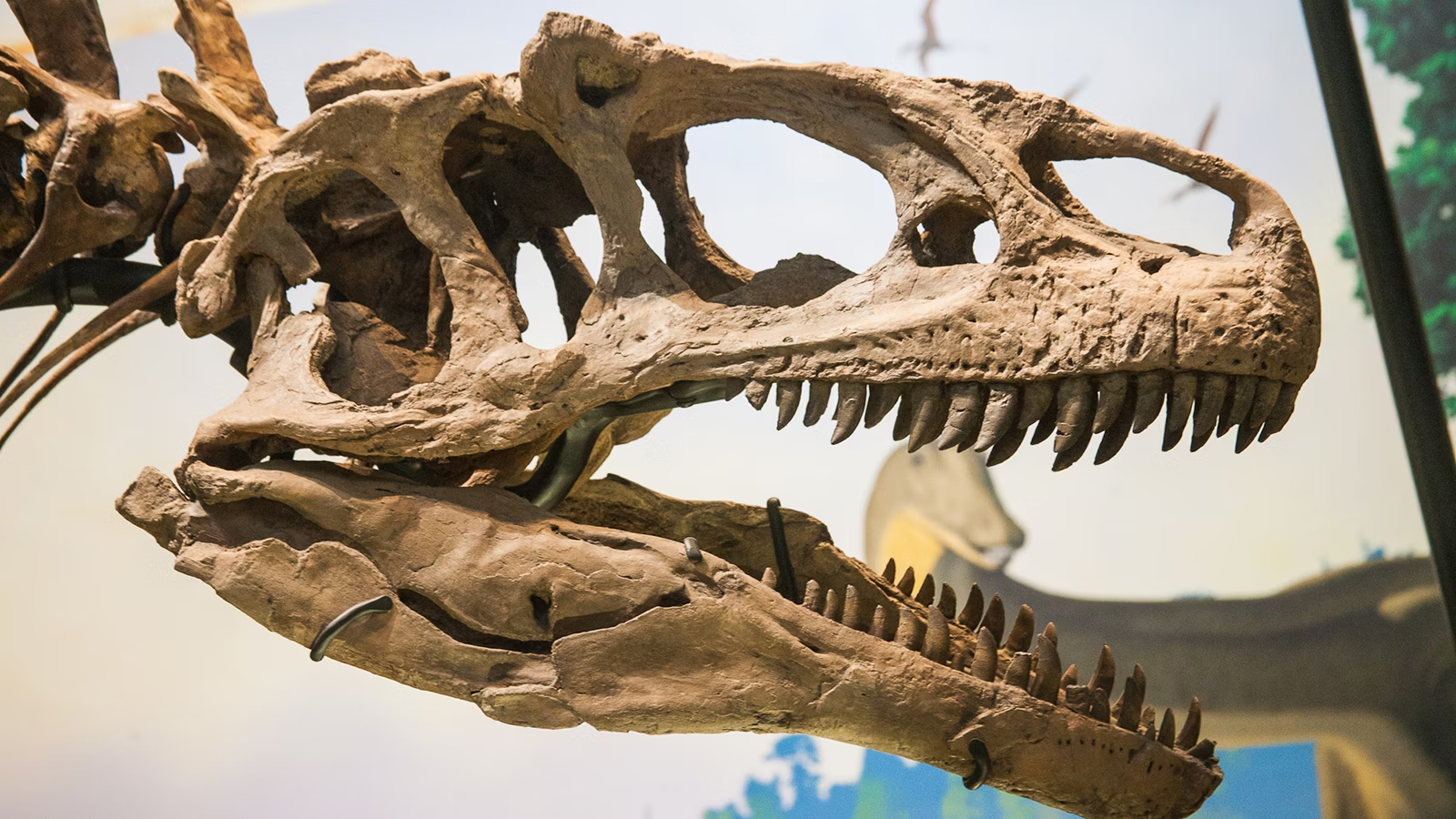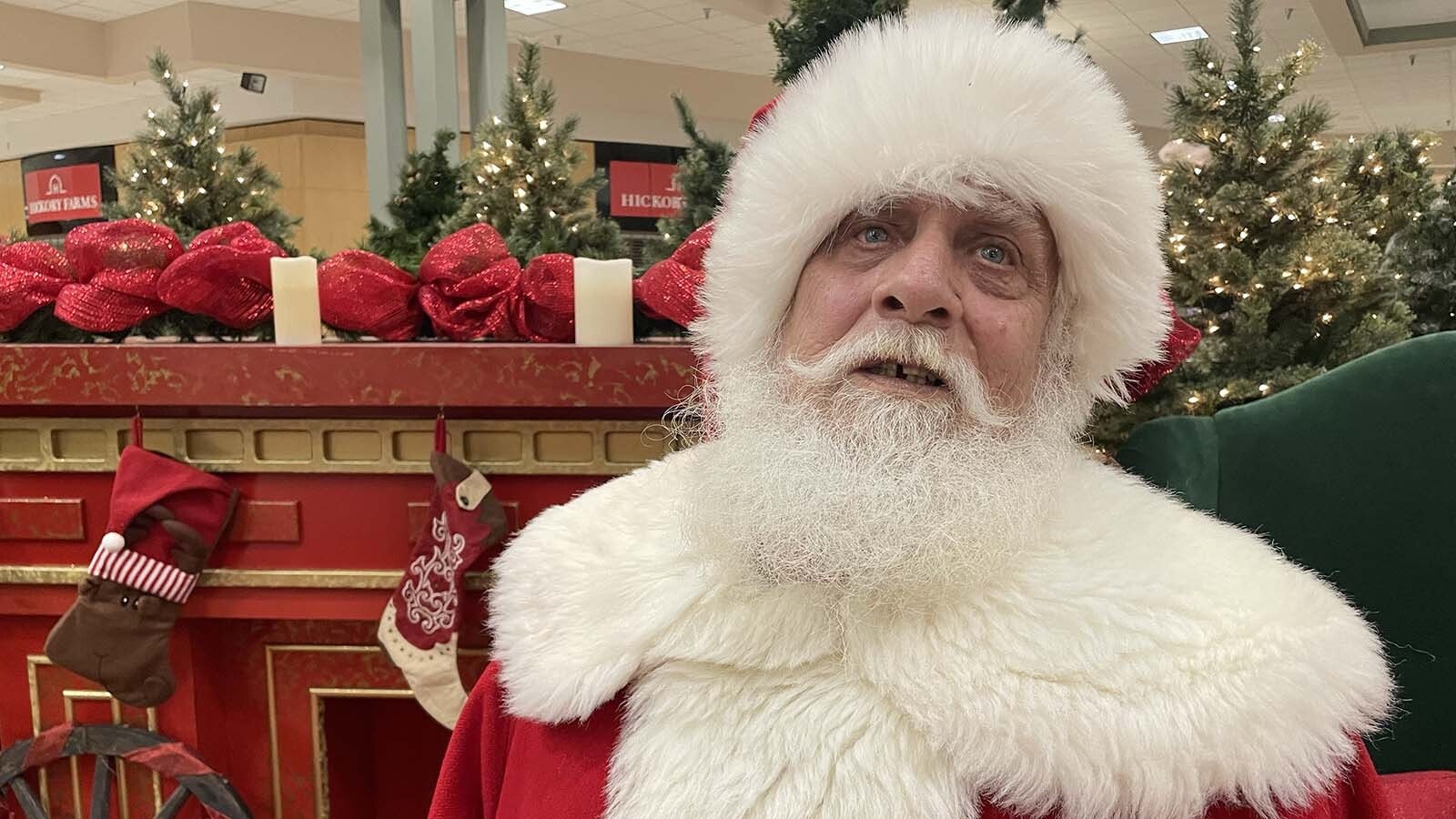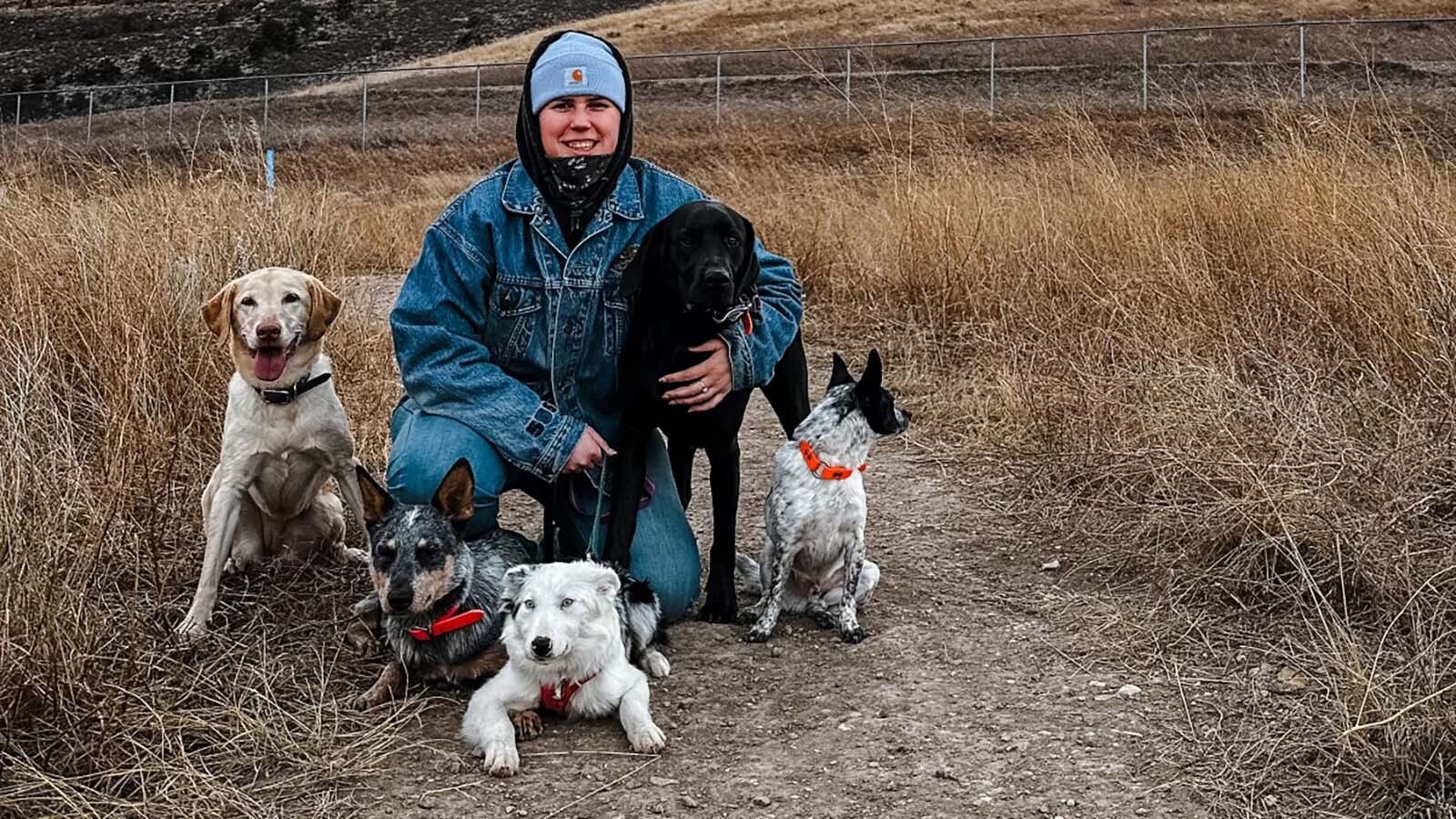A new study that investigated bites on dinosaur bones paints a vivid picture of life in the Jurassic Period — a world of half-grown Brontosaurus and Diplodocus living fast, dying young, getting food and being food.
“I like to say sauropod dinosaurs made it on flip-top heads, air-filled bones, and teenage pregnancy,” said Mathew Wedel, associate professor of anatomy at the Western University of Health Sciences in Pomona, California.
Wedel is one of the authors of a new paper, “Bite and Tooth Marks on Sauropod Dinosaurs from the Morrison Formation,” published in the academic journal PeerJ on Nov. 14. Some of the biggest revelations in the study came from what they didn’t find, in addition to what has and continues to be found.
Once again, the fossils of Wyoming were a critical part of the extensive research. They've helped take a bite out of a gnawing mystery, but revealed plenty more for paleontologists to chew on.
Sauropod Success
“My career has been built working on sauropod dinosaurs, trying to understand their lives and how they were able to be so big, successful and diverse,” Wedel told Cowboy State Daily. “There are a lot of these things coexisting, which is a weird thing. How can several different species of whale-sized animals coexist?”
Paleontologists have sought the solution to the sauropod success story for more than a century, but the new study provided some clues that might answer some of those questions. The research team looked through the collections of multiple museums and documented every bone that had the telltale gouges left behind by the teeth of carnivorous dinosaurs.
Wedel and his colleagues focused on one area: The Late Jurassic Morrison Formation of western North America, which Wedel called “probably the largest dinosaur-bearing rock formation in the world.” The Morrison stretches from the panhandle of Oklahoma to eastern Utah, going as far south as New Mexico and as far north as Montana, including Wyoming.
“We looked at a place where there’s a lot of sauropods and big theropods that are interacting with herbivores,” Wedel said. “It represents an apex of diversity and abundance of sauropods. In the Morrison, they are by far the most common dinosaurs, which is weird. These giant dinosaurs are more common than the little dinosaurs, and they’re crazy diverse.”

Bone Bites
Wedel and his colleagues examined more than 600 single bones from sauropods found in 19 sites from Wyoming, Colorado, Montana, South Dakota, and Utah. Of those fossils, 68 had undeniable dinosaur tooth marks made by the teeth of large carnivores living in Jurassic North America, including Allosaurus, Ceratosaurus and Torvosaurus.
“We found a lot more bitten bones than we expected,” Wedel said. “We were surprised that there were so many that hadn’t made it into the scientific literature.”
Before this study, most paleontologists didn’t see Jurassic predators as bone crunchers, given their thin teeth and relatively light-built skulls. The tooth marks proved they were crunching through many more bones than believed, but Wedel said that insight led to another dilemma.
“At the same time, we’re not finding many tooth-marked bones,” he said. “Around 11% of the bones we studied had bite marks. How do we square that?”
Wedel and his colleagues squared it following the evidence in dinosaur bones that hadn’t been studied because it hadn’t been found. If the Jurassic predators were crunching through sauropod bones, they ate the evidence 150 million years ago.
“The bones that we have available to study are in this Goldilocks zone where they’re bitten hard enough to leave a trace but not so hard that they get destroyed,” he said.
Sauropod bones large enough to endure a theropod bite come from large specimens. Wedel and his colleagues theorize that these bones were scavenged by large Jurassic carnivores long after the massive sauropod died.
Meanwhile, the bones the carnivores crunched through came from smaller sauropods. And that, Wedel said, is where absence of evidence doesn’t prove evidence of absence.
Sauropod Survivors
Sauropods were big animals and big breeders. While elephants, whales and other large mammals give birth to only one offspring every few years, dinosaurs were prolific egg-layers that could lay hundreds of eggs in a lifetime.
“If a big female egg layer comes through a disaster and lays her eggs, she can repopulate the species pretty quickly,” Wedel said. “That’s one of the reasons sauropods were so successful.”
Many animals that reproduce en masse reach sexual maturity faster to constantly replenish the population. Wedel said sauropods grew very fast in the first few years of life, so they were probably capable of reproducing while still young.
This is also true in ecosystems where animals are under a high threat of predation. With so many ravenous theropods roaming the landscape, it makes even more sense for sauropods to mature quickly and reproduce as much as possible.
The astoundingly large and diverse sauropod populations found in the Morrison Formation were dependent on the reproductive success of the juveniles and sub-adults.
“There wouldn’t necessarily always have to be full-grown adults around,” he said. “Once you have the potential for half-grown animals to be reproducing, maybe the population was mostly reproducing juveniles and subadults, and you only get adults when conditions are perfect for them to make it through the lottery and develop to full size.”
Bones from baby, juvenile and subadult sauropods have been found in the Morrison, but they’re scarce. The study suggests that the young sauropods were easier for the large Jurassic predators to kill and eat. Their smaller size and easier-to-consume bones and bodies made them preferential targets.
Because of this, Jurassic Wyoming would’ve been a young-adult dystopia filled with pregnant teenage sauropods and lots of freshly hatched babies. The massive adult sauropods that make the most impressive museum exhibits were a lucky exception to the norm of mass mortality among their younger, smaller counterparts.
“There had to be juveniles,” he said. “There didn’t have to be adults, and they were vastly outnumbered.”
Wyoming’s Contribution
Once again, Wyoming’s paleontological resources played an essential role in this groundbreaking study of the prehistoric past. Wedel said sauropod bones collected from the Morrison Formation in Wyoming contributed to the exciting conclusions of the research.
“Wyoming has some of the best and most productive Morrison quarries on the planet,” he said.
Wedel highlighted sauropod fossils collected from two iconic Wyoming locales: The Sheep Creek Quarries in Albany County and the Howe Quarry in Big Horn County.
The Sheep Creek Quarries are legendary in paleontology history, mainly because of the complete Diplodocus skeleton found there in 1901. Ultra-wealthy philanthropist Andrew Carnegie bought that skeleton, and it became the most iconic and famous dinosaur specimen ever found. It is still on display in the Carnegie Museum of Natural History in Pittsburgh, Pennsylvania.
The Howe Quarry was discovered in the 1930s by legendary paleontologist Barnum Brown, who excavated 4,000 bones in six months. All the bones found in the Howe Quarry are kept at the American Museum of Natural History in New York City, and paleontologists from the museum continue excavating at the site today.
Three different-sized Brontosaurus specimens were found in the Sheep Creek Quarries. Wedel said the two smaller dinosaurs, a pony-sized baby and a half-grown sub-adult, are in the collections of the Carnegie Museum and were included in the study.
“The sub-adult, CM 555, has bite marks on both ends of its arm and leg bones,” he said. “That’s usually what happens when a skeleton is completely torn apart in the scavenging phase. That half-grown Brontosaurus may have been killed by theropods, but it was definitely scavenged by theropods.”
Meanwhile, the adult Brontosaurus found in the Sheep Creek Quarries isn’t in Pittsburgh or New York. That behemoth stands in the University of Wyoming Geological Museum in Laramie, not far from where it was found.

And So Can You
The only thing more exciting than publishing the results of a long-simmering research project is finding new projects in the process. Wedel and his colleagues have raised more questions than they’ve answered.
“This is just the beginning. There are so many potential projects to be done,” he said.
Wedel wants to know why sauropod bones from certain quarries have more bite marks than other quarries of the same age and if there’s a way to identify which carnivorous dinosaurs left which bite marks. But that will require more investigation into a lot more sauropod bones.
However, one aspect Wedel finds particularly exciting about this research is that anyone can contribute, and he hopes many are inspired to do so.
“Anybody can do this,” he said. “All it requires is determination, patience and access to a museum.”
All of these bones were excavated from Morrison Formation sites in badlands of the American West, which most people imagine when they think of paleontological discovery. However, the information for this study came from giving the fossils another look as they were sitting on shelves and in collections in museums.
Wedel said studies like these require a lot of information, and the only way to get it is by looking at as many fossils as possible. But looking at dinosaur bones and identifying bite marks doesn’t require a paleontologist looking over one’s shoulder.
“Ultimately, we need a lot more patient work in museum collections,” he said. “That’s the kind of study anybody with access to a museum collection can do. It just takes time to patiently pick up every bone, look at every single surface and write down everything that you find. That’s going to give us the density of data to answer some of these questions.”
The new paper is open access, which means anybody can read and download the entire thing free. With that information, Wedel hopes many more professional and aspiring paleontologists will start looking for and finding dinosaur bone bites.
“What I want is for people to read our paper and say, ‘Oh, that’s cool! I want to crack that nut. Let’s pour a couple hundred hours into our museum and see what we can find,’” he said.

Andrew Rossi can be reached at arossi@cowboystatedaily.com.





